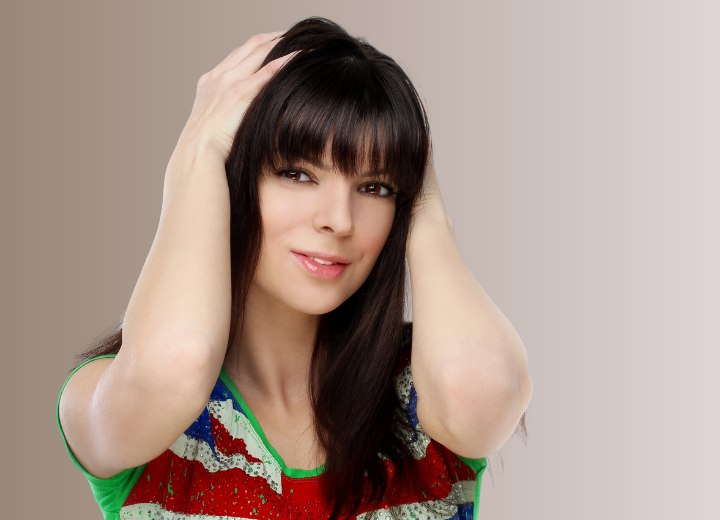How To Grow Healthy Long Hair

Genetics certainly plays a part in so many aspects of our lives. Hair and the way it grows is no different. While we have to work with what genetics have given us, there are several things we can do to help in the never-ending endeavor of growing our hair as long as our genes will allow us to.
Most hair, on average, grows half an inch per month. It can grow at a slower rate for those of African ancestry and at a faster rate for those of Asian or Caucasian lineage. Every individual has a unique growth cycle called a hair cycle. There are three phases to the hair cycle: Anagen, Catagen, and Telogen phases. Each phase has specific characteristics that determine what length the hair will be. One strand of hair may be in the Anagen phase, while another is in the Catagen phase. Once the cycle is complete, a new strand of hair begins to form.
The Anagen phase is essentially regulated by genetics and typically lasts anywhere from 2 to 6 years. Hair does not automatically stop growing once it reaches a specific length but rather, once a certain period of time has elapsed. Everyone sheds hair, and the average rate is 100 hairs per day, which are replaced fairly quickly. This is a natural part of the hair growth process. Old hair falls out so that new hair can grow in.
Age & Stress
We all know stress isn’t good for us. Having a demanding and tense schedule or an overwhelming aliment can be a blow to your system and contribute to hair loss. Studies have revealed that the biology of hair can evolve as we get older and the Anagen stage (growth stage) can be reduced. This means that hair might begin to shed sooner, giving it a thinner appearance.
Things change as we grow older, including the oil production on our scalp. The oil (sebum) moisturizes the hair shaft and helps keep split ends to a minimum. Unfortunately, sebum production starts to slow down in the mid-forties, so as we age, we may have to add hydrating products to our regimen.

You can put creams and lotions on your skin and hair, but first and foremost, our hair, skin, and nails are nourished and fortified from within. This means that we have to give our bodies healthy and wholesome foods and hydrate ourselves so that we are putting the best fuel in our bodies. Doctors recommend 8 cups of water per day, along with organic foods, to clear out pollutants within the body so that the body has what it needs to focus on things like hair growth.
Deficiencies affect the whole body, including our hair. It is important to have adequate levels of protein and iron to strengthen and prevent breakage. Biotin significantly increases growth and makes hair stronger and the more durable the hair, the longer it tends to grow. Scientists agree that a shortage of ferritin can trigger shedding by moving the hair out of its Anagen phase. An overactive or underactive thyroid has also been shown to have an effect on hair growth. Biotin significantly increases growth and makes hair stronger, and stronger hair tends to grow longer. If you eat clean, take vitamins, and stay hydrated, you will notice a change not only in your hair, but also in your skin and nails!
Be conscious of your daily products
Most recognize that using a good shampoo and conditioner is an important aspect of good hair care, but limiting your washings is also something that should not be overlooked. It can strip the hair of its natural oils, the oils that are made to protect your hair from becoming brittle and lead to breakage. Avoid shampoos with silicone in them. They put a layer of silicone on the hair that makes the hair brittle, causes buildup and also prevents anything healthy from getting in.
Trim when needed
Hair growth begins at the roots, but most damage is concentrated near the ends. Trimming hair along the way to your desired length cannot be ignored. It’s absolutely necessary to maximize hair growth. It may sound counterintuitive, but if the ends are not trimmed above where they split, then the split will continue up the hair shaft and your hair will not only lose length, but you will end up with the dreaded frizzy look!
For someone to maintain their current hair length, they should trim their hair every 4 to 6 weeks. However, if they are trying to grow their hair out, they should trim their hair every 8 to 10 weeks. More importantly, find yourself an excellent hairdresser who recognizes that you are growing your hair out and understands the necessity to cut above where the hair splits, but also a stylist who is careful and considerate enough not to cut off any more than what is necessary.
Continue reading ...